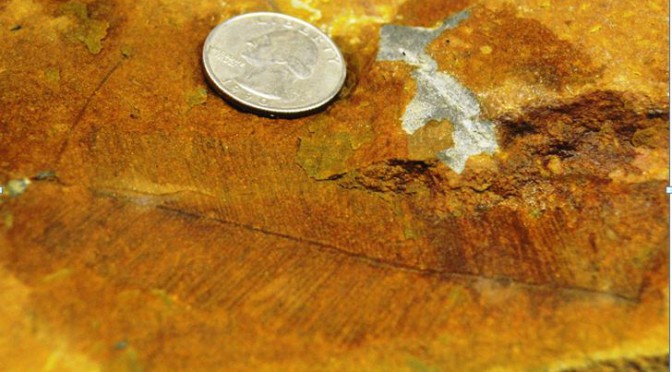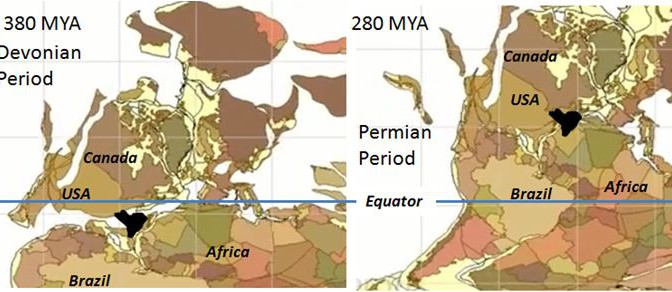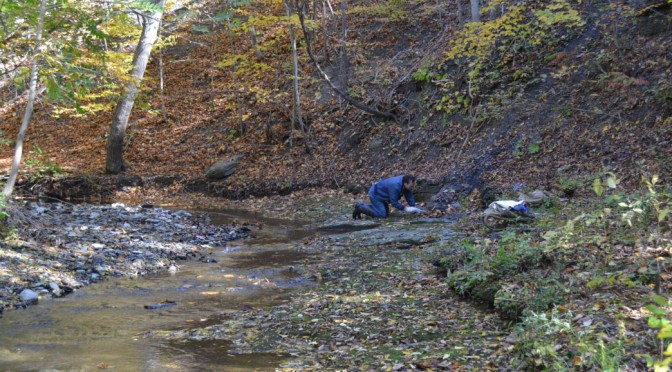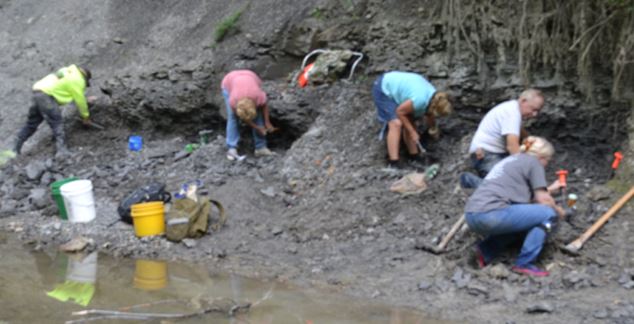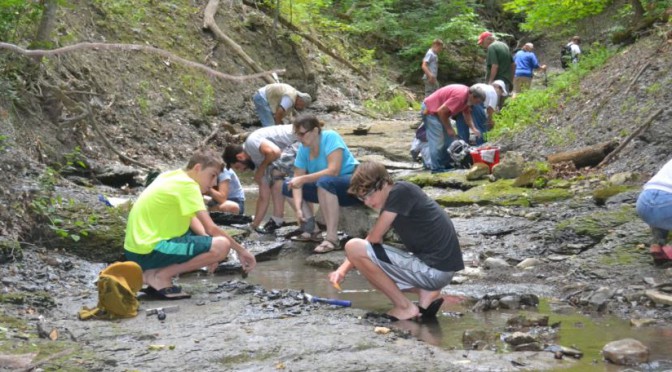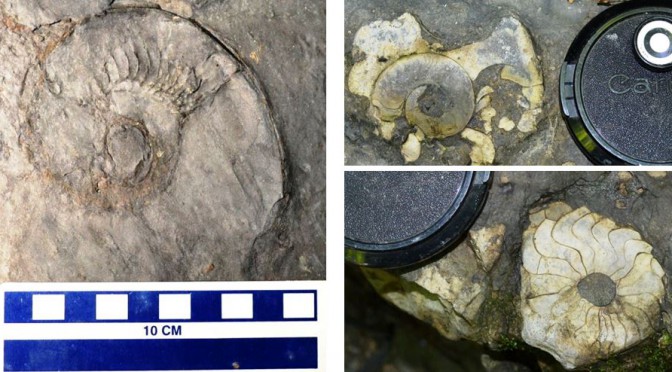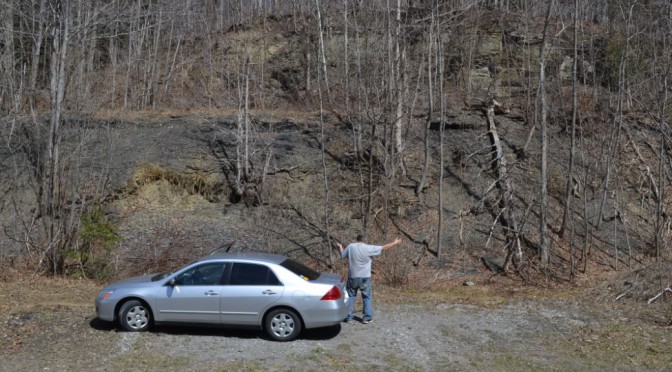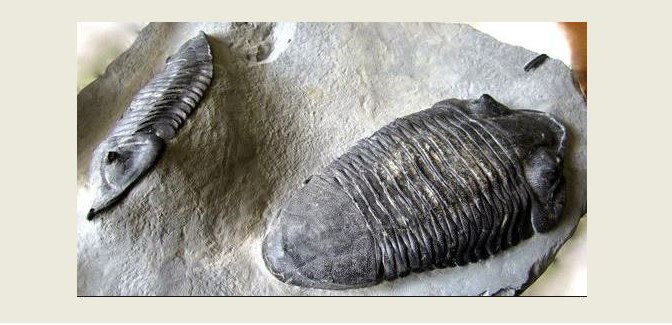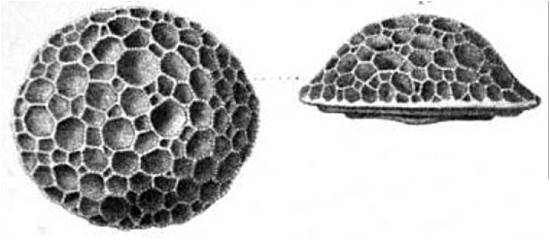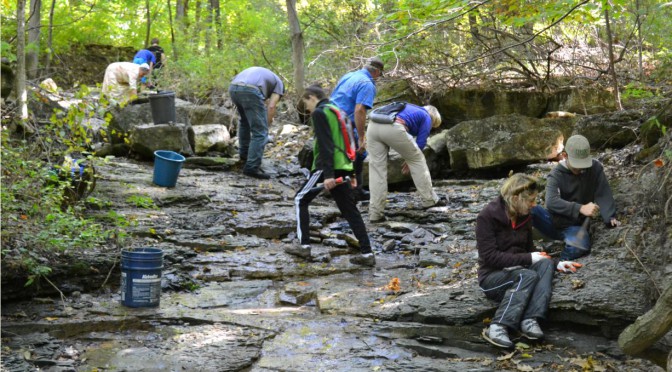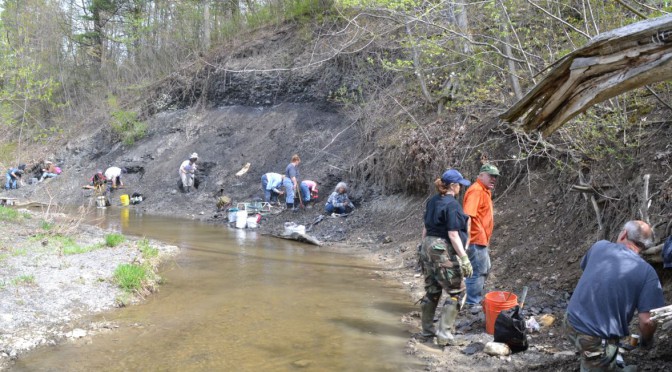Leave it to the field trip leader of the Wayne County Gem and Mineral Club, Bill Chapman, to find something new! Well, not exactly new, but certainly unusual. Plumalina plumaria were first described by Hall (1878). Yes, they look like feathers, and one might want to classify them as ferns or plants of some sort, but the latest understanding of these rather rare fossils is that they were hydroids (Muscente and Allmon, 2013). Hydroids are a class of small predators that are related to jellyfish. Dominated by soft-body parts hydroids are not well preserved in the fossil record causing extinct species to often be labeled Incertae Sedis in many fossil lists. Incertae Sedis are extinct organisms with unknown or uncertain relation to known phyla.
Tag Archives: Devonian in New York
A Little Local History: Geologic History That is
It was not that long ago that Wayne County and the rest of western New York were located just south of the equator while basking in tropical temperatures. A large and shallow inland sea dominated the region with high mountains to the east and a shallow continental margin to the west. The sea was replete with life. Invertebrates dominated the sea bottom, corals and brachiopods filtered nutrients from the seawater to survive, while trilobites, cephalopods (squid), and a host of other scavenger and predator species roamed the benthic (sea bottom) region feeding on them. Numerous species of gastropods (snails) and bivalves (clams) were abundant also. The seas above were dominated by large armored fish (i.e. Dunkleosteus) and a multitude of smaller fish. It was the Devonian Period of earth’s history. It was the age of fish.
Continue reading A Little Local History: Geologic History That is
Indian Creek
There are many well known fossil collecting sites in the creeks and gullies draining into the Finger Lakes (places like Kashong Gully, Deep Run, and Portland Point to name a few). But for every well documented site there are a dozen lesser known locales where drainages into the Finger Lakes expose the fossil rich strata of the 385 million year old Middle Devonian Hamilton Group. Indian Creek, near Williard on the eastern side of Seneca Lake, is one such location.
The Annual Visit to Spring Creek in Alden
Having been rained and flooded out in June, the WCGMC found a way to squeeze a trip Alden into its August schedule visiting the ever popular site on Saturday August 29th. This time the weather was perfect, the water was low, and, as always the fossils were there to be collected. The formidable Ledyard shale cliffs in the creek bed have been a favorite site for collectors for several decades, but winter erosion always seems to expose new ones to extract with a little digging.
Two clubs at Green’s Landing
It was a large, enthusiastic group of all ages from two local clubs that gathered on August 9th to trek into Green’s Landing on a fossil hunt. Stephen Mayer led the Wayne County Gem and Mineral Club contingent while Dan Krisher (also a WCGMC member) led the Rochester Academy of Science Fossil Group. The total group numbered 27 with about an equal number from each organization. It was a wonderful way for folks in each group to meet fellow fossil enthusiasts while doing what they enjoy most, digging in the Middle Devonian. And Green’s Landing was ready for us with as diverse and prolific assemblage of fossils as one could imagine.
Awesome Ammonites
- There are so many known fossil collecting sites in western New York that one rarely elects to “explore” new creeks or seek out new locations. And the Middle Devonian Hamilton Group is so well known in quality, quantity, and diversity of species that there seems little reason to hunt elsewhere. But on July 11, that is exactly what five members of the Rochester Academy of Science Fossil Group decided to do. We stepped up section into the Upper Devonian and headed for a gully exposing the Cashaqua Formation near Middlesex, NY. Continue reading Awesome Ammonites
Sheds Fossil Site
Sheds, NY roadcut was the “Site of the Month” in the June 2015 WCGMC News
Many of us have become familiar with exposures of fossil-bearing Middle Devonian Hamilton Group in the creeks and gulches draining into the Finger Lakes. And we may have ventured west to Penn-Dixie or other Buffalo region sites. But there are also numerous sites within these same geologic units in central New York. One small site is a simple roadside exposure on Dugway Road, just 2.4 miles northeast of Sheds, Madison County, NY (GPS N 42º 49.94’, W 75º 47.72’).
DiPleura dekayi
A Middle Devonian Trilobite of New York State By Stephen Mayer
Stephen Mayer is a member of the Wayne County Gem and Mineral Club and wrote this piece for the March 2015 newsletter. It is certainly an informative and appropriate entry for my blog and with Stephen’s permission I have included it.
Whether collected by oneself in a creek bed, road cut or quarry or just simply observed in a museum’s exhibit, trilobites have fascinated people for thousands of years. Excavation of early burial grounds 50,000 years old have revealed trilobites with human remains (AMNH, 2015). Their fossil forms have been the basis of numerous studies by everyone from paleontologists to school children.
Trilobites are extinct arthropods distantly related to the modern marine lobsters and horseshoe crabs. In the Burgess Shale in the rugged high peaks of the mountains of British Columbia, Canada an amazing group of soft-bodied organisms have been found including Trilobitamorpha – fossils that appear to be like trilobites but just have not fully evolved yet. Then true trilobites first appeared during the Cambrian Period about 521 million years ago during the “Cambrian Explosion” as a result of the development of a chitinous exoskeleton which permitted fossilization of these organisms.
Pleurodictyum
I have had an active interest in mineral collecting for several decades (five years in Arizona can do that to anyone), but have developed a growing interest in fossils since moving to western New York two years ago. Having completed my first full season of mucking up creeks and stopping at roadcuts in the Silurian and Devonian strata of western New York I can announce that I now have a favorite fossil.
I realize many are, and for very good reason, enamored with trilobites. Be they DiPleura, Greenops, Dalmanites, or Eldredgeops , those are certainly great finds and I will be more than happy to pick one up when I come upon it. But I took a fancy to a simple tabulate coral species this summer: Pleurodictyum americanum, a species first described by the German paleontologist Carl Ferdinand von Roemer in the late 19th century. Note his original drawings in the featured image for this post (Roemer, 1876).
Perhaps it is the near perfect symmetry of the colonial coral that grabbed my eye. With a rounded top and a fairly flat bottom they certainly look grand once clay and shale is washed from the polygonal corallites covering the surface. Even better presentation results when multiple specimens of variable size are displayed together. My interest was also sparked because “pleuros”, as I have come to affectionately call them, are not as common as horn coral or many of the brachiopods species that are ubiquitous at many sites in the Finger Lakes region, but they are also far from rare and when found they are typically complete and recoverable.
Greens Landing, Canandaigua Lake
“Site of the Month” article I wrote for Nov. 2014 WCGMC News
More than two decades ago, WCGMC member Stephen Mayer did his M.S. at SUNY-Fredonia focusing on the stratigraphy and fossil assemblages of the Jaycox member of the Ludlowville Formation. A small creek on the east side of Canandaigua Lake provided wonderful exposure of the section and became the key exposure for his work. On Saturday September 27th Stephen returned to his old haunt, this time leading 17 members of our club on a fossil hunt at Green’s Landing. Naturally we learned a little about the local stratigraphy from Stephen also as we hiked about 1200’ up the creek, mostly through Wanakah member shales.
Devonian Fossils of NY – A Book review
Field Guide to the Devonian Fossils of New York by Karl A. Wilson (Paleontological Research Institute, 2014): This compact (6” by 9”) spiral bound fieldbook is a update to the1994 PRI publication by David Linsley. After introductory sections on general Devonian stratigraphy and geology and a section of fossil collecting methods, the book systematically introduces Devonian fossils. Sections on sponges, corals, bryozoa, brachiopods, mollusks, anthropods, trilobites, echinoderms, and more follow with diagrammatic plates offset by descriptive pages detailing the fossils. By limiting the species to those found in New York, you are much more likely to identify your finds with this book than with a more inclusive book. The PRI price is $18 and the book can be obtained online with a modest additional shipping charge. Mine arrived in 3 days !
Deep Run, Lake Canandaigua
NOTE ADDED OCTOBER 4, 2017: The property in Deep Run has changed ownership and the new owner is NOT allowing collecting or trespassing. The fossil-rich beds described in this note can no longer be visited. WCGMC will not schedule any more trips to Deep Run.
SECOND NOTE December 2019: The creek is still posted No Trespassing, however, the beach is public. In 2019, I started to collect sands and Deep Run Beach was one of my first to collect.
==============================================
Article I wrote for “Site of the Month”, WCGMC News, Sept. 2014
Devonian Fossils at Deep Run
Most residents of western New York carry on their daily business without any knowledge that they live in a region with some of the richest and most diverse fossil collecting in the United States. Those of us in the WCGMC are lucky to know how blessed with are with our collecting opportunities. But do we know the series of geologic events that led to this unique opportunity?
There are other fossil-bearing stratigraphic units in New York, but here we discuss the prolific Middle Devonian Ludlowville Formation within the Hamilton Group. About 385MY ago an inland shallow sea occupied much of western New York and both the sea and the benthic bottom literally teamed with marine life. Corals (both rugose and tabulate), brachiopods, gastropods, crinoids, and, of course, those highly sought after trilobites thrived communally in the shallow seas behind the continental mass to the west and inboard of the Catskill Delta and Acadian Mountains to the east.
Spring Creek in Alden, NY
June, 2016 update on Land Ownership:
WCGMC has been informed by the new owner of the property off Route 20 in Alden that the Spring Creek area where we have enjoyed collecting pyritized fossils for a long time is now off limits to collecting. The new owner has informed us that in the future he will treat “fossil collectors as trespassers”. Given the new owner’s wishes, as of June, 2016 WCGMC is not planning any future trips to this area and the site should be considered closed to collecting.
==================================================
Minerals and Fossils Together
Many of us have a special passion for collecting aesthetic and/or unusual minerals, while others prefer the varied forms and diverse variety offered by the early-mid Paleozoic fossil collecting that can be done in western New York. There is one site that can please both groups of collectors. Along Spring Creek in Alden, NY, the rich and diverse Devonian fossil assemblage we have all come to know and love is locally fully pyritized. Opening the fissile shale surface not only reveals a 380 MY old fossil, but a shiny mineral specimen as well. The prize is a pyritized fossil. Cephalopods, brachiopods, and ammonites are the most common, but two species of trilobites have also been found completely replaced by the iron sulfide mineral pyrite.
Just north of US Route 20 as it passes through the small town of Alden, NY, Spring Creek has carved itself deeply into the Middle Devonian Ledyard Shale Member of the Ludlowville Formation. Known for decades, the site is readily available to all with two legs, a hammer, a backpack (or even large pockets), and the willingness to perhaps get a little wet and mostly certainly muddy. A short hike along well beaten trails leads to the creek which can be accessed at several sites. Fourteen of us can be seen at one of those sites in the cover photo above.
